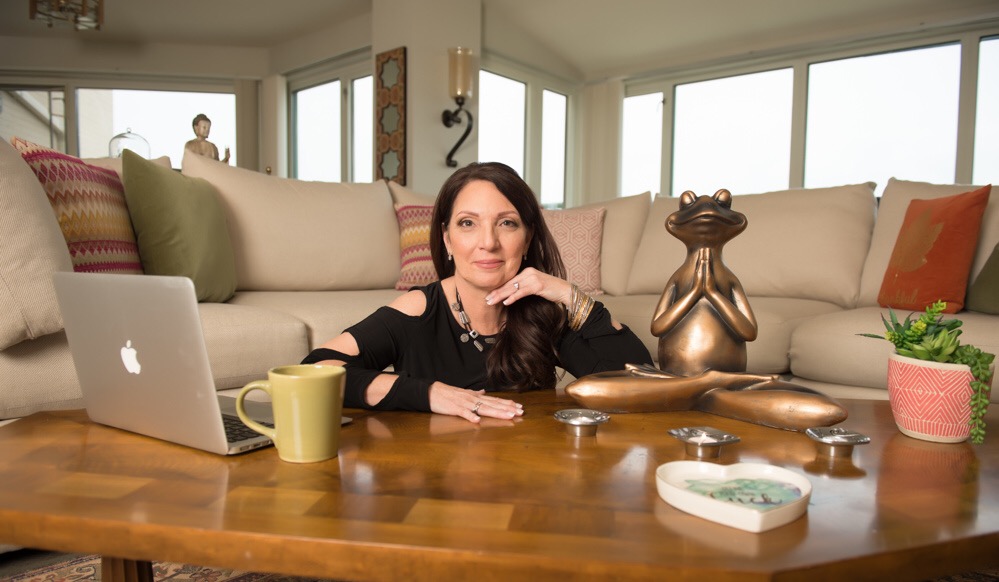Minimalist Interior Design: Embracing Simplicity
- Joy Nan Rodia

- Jun 1, 2023
- 4 min read
In contemporary society, the accumulation of material possessions has become an ubiquitous trend, leading to cramped and chaotic environments that can contribute to feelings of stress, anxiety, and overwhelm. This trend has been fueled by consumerism, which has instilled a desire for more, leading to the accumulation of unnecessary items. It's no wonder that many of us are searching for ways to simplify our lives and create a sense of calm and balance. That's where minimalist interior design comes in.

What Is Minimalist Design?
Minimalism is not just a design trend, it's a lifestyle that promotes simplicity, wellness, and mindfulness. By embracing minimalism in your home decor, you can create a peaceful and calming environment that supports your mental and emotional well-being.
Minimalist interior design is all about stripping down to the essentials and focusing on what really matters. It's about eliminating the unnecessary and creating a space that is clean, uncluttered, and free of any distractions. This design style is characterized by its emphasis on clean, simple lines, sculptural forms, and the use of limited, well-chosen materials.
At its core, minimalist interior design is about creating a space that promotes relaxation, mindfulness, and overall wellness. By focusing on simplicity and functionality, you can create a home environment that is both calming and rejuvenating. Whether you're looking to reduce stress, improve your mental health, or simply create a more peaceful living space, minimalist interior design can help you achieve your goals.
In this blog, we will delve into the key principles and characteristics of minimalist interior design that can aid in promoting wellness in our homes. We will also examine the benefits of this approach. To start, let's explore the essential characteristics of minimalist interior design.
Simplicity: One of the essential elements of minimalist interior design is simplicity. It means getting rid of clutter and unnecessary items from our living spaces and focusing only on the essentials. By simplifying our surroundings, we can reduce visual and mental distractions that can cause stress and anxiety, and create a more calming environment that promotes well-being. Minimalist design encourages us to consider the functionality and practicality of each item in our home and eliminate anything that doesn't serve a clear purpose.

Functionality: Minimalist design prioritizes functionality and usefulness, which means that everything in our home should serve a specific purpose. This helps us focus on what is truly important and avoid accumulating unnecessary items that can clutter our space and contribute to feelings of overwhelm. In minimalist design, each item should be carefully chosen for its practicality and value, rather than for its decorative qualities. This approach to design encourages us to be intentional and thoughtful about the items we bring into our homes.

Neutral Colors and Natural Materials: Minimalist interior design often features a neutral color palette, including shades of white, beige, gray, and black. These colors create a sense of calm and serenity in our homes, promoting relaxation and peace of mind. Natural materials such as wood, stone, and linen are also commonly used in minimalist design, as they add warmth and texture to a space without overwhelming it. These materials help to create a natural and organic feel in our homes, enhancing our connection to nature and promoting a sense of balance and harmony.

Clean Lines and Simple Shapes: Minimalist interior design is characterized by clean, simple lines and shapes. This approach to design helps create a sense of order and balance in our surroundings, which can promote a feeling of calm and tranquility. Minimalist design favors basic geometric shapes, such as squares, circles, and rectangles, and eliminates ornate details and embellishments. This approach encourages us to focus on the essential elements of our living space, rather than on unnecessary decorations or accessories that can clutter our environment.

The Benefits of Minimalist Interior Design
Minimalist interior design has numerous benefits for our well-being. One of the most significant advantages is the increased calm and relaxation that it can promote. By simplifying our surroundings and focusing on the essentials, we can reduce visual and mental distractions, leading to a more peaceful and serene environment.
The lack of clutter in a minimalist space can also reduce stress levels and create a sense of calm. This can have a positive impact on our mental and emotional health, making minimalist design an excellent choice for anyone looking to create a more peaceful living space.
In addition to promoting calm and relaxation, minimalist interior design can also enhance focus and productivity. An organized and clean home can lead to increased focus and productivity, as it is easier to concentrate and complete tasks efficiently when there are fewer distractions. With a minimalist approach, functionality and practicality of each item in our home are prioritized.
This leads to a more organized and clean living space, which can improve our ability to focus and be productive. Overall, minimalist design is an excellent choice for those seeking to create a more efficient and productive living space.
Simplicity is often the best solution. When it comes to interior design, embracing minimalism can be an effective way to create a serene and functional living space. Minimalism can also encourage us to be more mindful of the objects we bring into our homes, thus promoting a more sustainable way of living.
Whether you're looking to create a calming oasis or streamline your daily routine, embracing the principles of minimalist interior design can offer a myriad of benefits.




Comments